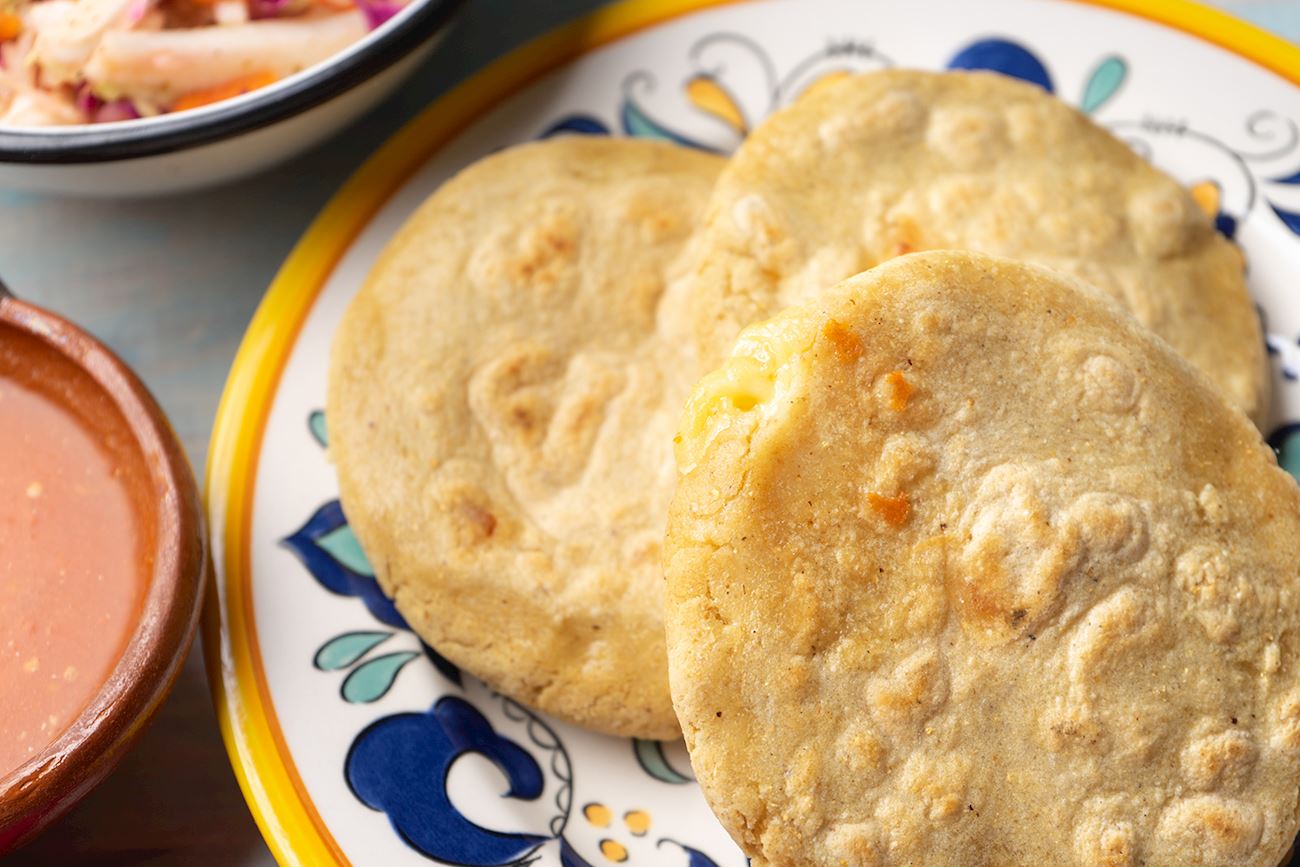MAIN INGREDIENTS
Pupusa is the national dish of El Salvador, a thick, stuffed, skillet-cooked corn tortilla, traditionally served with a side of tomato salsa and coleslaw. Pupusas are almost always handmade, sold at numerous street corners in the country and eaten by hand.
A fundamental food of Salvadorian cuisine, the dish also has its day - the second Sunday in November, or National Pupusas Day, stressing the importance of this beloved street food, when pupusa-eating contests take place on the streets of El Salvador.
VARIATIONS OF Pupusa
MOST ICONIC Pupusa
View moreMAIN INGREDIENTS
Pupusa de queso con loroco is a variety of Salvadoran cheese pupusa, a thick corn tortilla that oozes with a mixture of gooey cheese and finely chopped loroco flower buds. The most traditional type of cheese used for the filling is quesillo, a kind of semi-soft white cheese, but other types of cheese may also be used.
Some of the most commonly used optional cheese varieties include queso fresco, mozzarella, farmer’s cheese, or Monterey Jack. The other key ingredient to the filling is loroco, the edible green buds of Fernaldia pandurata, a flowering vine that thrives throughout Central America.
MAIN INGREDIENTS
This variety of tamales comes from El Salvador, but it is also popular in Honduras. Tamales pisques are made with seasoned corn masa that is mixed with refried beans, and the combination is then neatly wrapped in plantain leaves. The tamales are then steamed, and the dish is ready for consumption after it has cooled down a bit.
It is recommended to serve tamales pisques with tomato sauce or curtido – a fermented cabbage relish that is a staple of Salvadoran cuisine.
TasteAtlas food rankings are based on the ratings of the TasteAtlas audience, with a series of mechanisms that recognize real users and that ignore bot, nationalist or local patriotic ratings, and give additional value to the ratings of users that the system recognizes as knowledgeable. TasteAtlas Rankings should not be seen as the final global conclusion about food. Their purpose is to promote excellent local foods, instill pride in traditional dishes, and arouse curiosity about dishes you haven’t tried.






